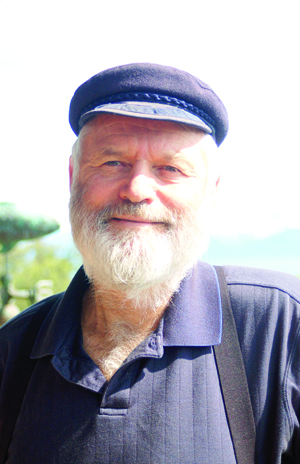Back in 2009, on a night when sleep didn’t come easily, Rep. Paul Seaton was watching a University of California TV program that featured an international research report on vitamin D. He was amazed at what he heard: that with adequate levels of vitamin D, 50 percent of breast cancer cases could be prevented.
It was one of those eureka moments for Homer’s longtime state representative.
“I realized one of the best things I could do was improve the preventative health of Alaskans,” he said in a telephone interview earlier this week from Juneau.
It’s been his focus ever since.
Seaton believes one of the best tools to improve health and prevent some common and costly diseases is making sure Alaskans have enough vitamin D.
Reducing the rate of breast cancer is just one example of the benefits of vitamin D. Seaton cites study after study that show the adequate levels of vitamin D (40-60 ng/ml) also:
• Lower the rate of Type 2 diabetes;
• Reduce inflammatory gum disease;
• Reduce the risk of developing dementia or Alzheimer’s disease;
• Lower language impairment in children whose mothers had adequate vitamin D levels during pregnancy;
• Reduce rates of rejection for kidney and lung transplants;
• Improve outcomes for all kinds of surgeries;
• Improve sleep; and
• Lessen symptoms of depression.
Just by making sure Alaskans have ample nutrients, including vitamin D, they can avoid an array of health problems, said Seaton.
“People need to know there’s something they can do for themselves that’s easy and relatively inexpensive and has multiple health benefits,” he said.
To help get the word out, Seaton will again have a vitamin D booth at this year’s Rotary Health Fair.
As he did last year, he will be giving away 300 vitamin D starter kits. The goal of the booth is to give people both education and experience with vitamin D. Those taking the kits are asked to take a brief survey at the fair and a follow-up survey three months later.
Seaton is encouraged by the response he received from last year’s 101 respondents:
• 98 percent of them said they intend to keep taking vitamin D;
• 93 percent planned to recommend vitamin D to family and friends; and
• Improvements in such areas as the winter blues, fatigue and frequency of colds were noted by many of the respondents.
Seaton knows that for many people a switch from an unhealthy to a healthy lifestyle is hard to accomplish. While vitamin D may not be a panacea for everything that ails someone, it still has some amazing benefits and is easier to do than making big changes in lifestyle. Some who participated in his survey last year said they felt better because of taking the vitamin D, which allowed them to exercise more, he said.
Seaton said it’s helpful for people to know what their level of vitamin D is; that’s one of the tests available in the blood draw through the health fair. He said the average level in the country is about 22 ng/ml, but it should be at least 40 for maximum health. His is about 73, and he tests for his vitamin D levels every six months. A daily dose of 5,000 IU of vitamin D in a soft-gel capsule will get most people’s vitamin D levels where they need to be. Some people may require more.
While sunshine is the primary source of vitamin D, people who live in northern latitudes, like Alaska, don’t get enough sunshine to manufacture adequate levels of vitamin D for seven months out of the year because the sun is too low on the horizon, necessitating a supplement. Plus, changes in how we live — more technology means more time inside and we tend to wear long sleeves even in the months where we do get direct sunlight — has reduced our daily exposure to the sun.
Seaton points out a study of reindeer herders in Siberia. Those who continued a traditional lifestyle and spent a lot of time outside had fewer diseases than the same ethnic group who lived in the cities.
Preventing disease is a lot easier and cheaper than treating disease, said Seaton. That’s one of the reasons he is so passionate about sharing the news of vitamin D’s benefits.
“People can take action or not,” he said. “For less than three cents a day, we can improve our health … we can lower the risk of diabetes (and other diseases).”
That’s the beauty of Saturday’s health fair: people have the opportunity to talk to all kinds of health and wellness experts and better understand the options they have.
“It’s really important for people to figure out on their own how they can improve their health,” said Seaton. “The health fair gives people the power to look after themselves.”
Lori Evans can be reached at lori.evans@homernews.com.



